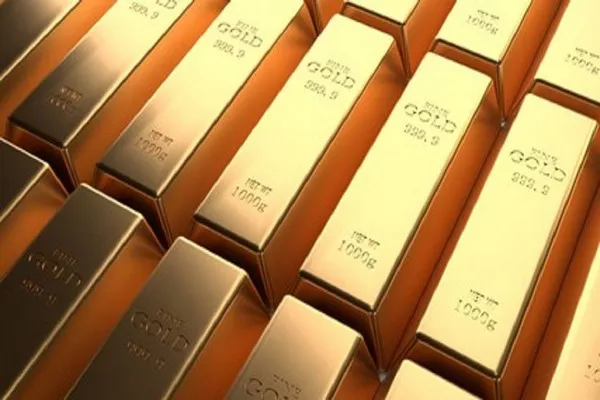Gold has long been considered a reliable investment and a store of value. Gold futures, in particular, play a significant role in the financial markets. The prices of gold futures are influenced by a multitude of factors, ranging from economic indicators to geopolitical events. In this article, we will delve into the various factors that impact gold futures prices and provide insights into how these dynamics can affect investors and traders.
I. The Basics of Gold Futures
Before delving into the factors affecting gold futures prices, let’s establish a fundamental understanding of gold futures.
What Are Gold Futures?
Gold futures are financial contracts that obligate the buyer to purchase and the seller to sell a specified quantity of gold at a predetermined price on a future date. These contracts are traded on commodities exchanges worldwide, including the Chicago Mercantile Exchange (CME) and the London Metal Exchange (LME). Gold futures offer a way for investors and hedgers to gain exposure to gold prices without owning the physical metal.
Role of Speculators and Hedgers
Gold futures serve two primary purposes: speculation and hedging. Speculators aim to profit from price movements by taking long (buy) or short (sell) positions in gold futures. Hedgers, on the other hand, use futures contracts to protect themselves from adverse price movements. For example, a gold miner may use futures to lock in a price for their future gold production.
II. Key Factors Influencing Gold Futures Prices
1. Economic Data and Monetary Policy
Economic indicators and central bank policies have a profound impact on gold futures prices. When economic data suggests potential economic downturns or inflationary pressures, gold tends to shine as a safe-haven asset. Central bank decisions, such as changes in interest rates or the implementation of quantitative easing, can also move gold prices. Lower interest rates and expansionary monetary policies tend to support gold prices.
2. Geopolitical Events
Geopolitical events, such as conflicts, trade tensions, and political instability, can create uncertainty in financial markets. In times of geopolitical turmoil, investors often seek refuge in gold, driving up its prices. These events can lead to sudden and significant price spikes in the gold futures market.
3. Currency Movements
Gold is priced in U.S. dollars, so changes in currency exchange rates can influence gold futures prices. A weaker U.S. dollar typically makes gold more attractive to international investors, leading to higher gold prices. Conversely, a stronger dollar may put downward pressure on gold.
4. Market Sentiment and Speculation
Market sentiment and speculative activity can cause rapid price swings in the gold futures market. Traders and investors often react to news and events, making short-term bets on gold prices. These short-term fluctuations can be influenced by sentiment, momentum, and technical analysis.
5. Inflation Expectations
Gold is often seen as a hedge against inflation. When investors anticipate rising inflation, they may allocate more of their portfolios to gold, leading to increased demand and higher prices. Inflation erodes the purchasing power of fiat currencies, making tangible assets like gold more attractive.
6. Interest Rates and Opportunity Costs
The opportunity cost of holding gold is the potential return that could be earned from alternative investments, such as bonds or equities. When interest rates are low, the opportunity cost of holding gold is reduced, making gold more appealing. Conversely, rising interest rates can increase the opportunity cost and put downward pressure on gold prices.
7. Physical Demand
Physical demand for gold, especially in the form of jewelry and coins, can influence gold futures prices. Strong demand, particularly from countries with a cultural affinity for gold, can provide support to prices. Conversely, weak physical demand may exert downward pressure.
III. FAQs (Frequently Asked Questions)
1. How can I invest in gold futures?
To invest in gold futures, you need to open an account with a brokerage that offers access to commodities futures markets. You’ll also need to learn about futures trading, margin requirements, and risk management.
2. Are gold futures a good investment for long-term investors?
Gold futures are typically used for short- to medium-term trading and hedging. Long-term investors may prefer physical gold or gold exchange-traded funds (ETFs) for their investment needs.
3. What is the relationship between gold and the U.S. dollar?
Gold is priced in U.S. dollars, so there is an inverse relationship between the two. A weaker dollar tends to boost gold prices, while a stronger dollar can put pressure on gold.
4. Can gold futures be used for hedging purposes?
Yes, gold futures are commonly used by businesses involved in the gold industry, such as miners and jewelry manufacturers, for hedging against adverse price movements.
5. How do I stay updated on factors influencing gold futures prices?
Staying informed about factors affecting gold prices requires keeping an eye on economic news, central bank policies, geopolitical developments, and market sentiment. Financial news sources and commodities research can be valuable resources.
In conclusion, gold futures prices are influenced by a complex interplay of economic, geopolitical, and market-related factors. Investors and traders in the gold futures market must stay vigilant, stay informed, and consider the multifaceted nature of these influences when making investment decisions. Whether you’re seeking a safe haven in times of uncertainty or aiming to profit from price movements, understanding these factors is essential for success in the gold futures market.

